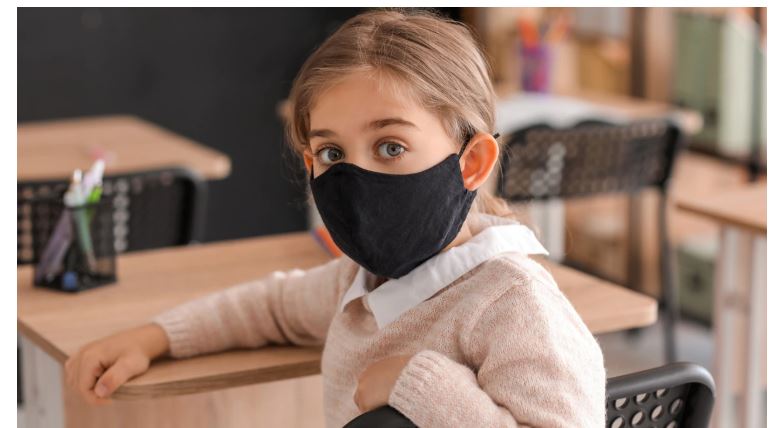A new school year is fast approaching, with many parents questioning what will be considered the new norm for their children once they return to school. School districts across the country are working to unveil plans to reopen with new procedures for just about everything. However, none are set in stone because erratic hot spots of covid-19 cases throughout the country. Despite the unpredictability of the virus until we get a mass-produced and distributed vaccine, the debate on whether to send children back to school this fall is full speed ahead.
Many districts are under pressure from parents to reopen schools especially in areas with vulnerable populations. The American Academy of Pediatrics, “strongly advocates that all policy considerations for the coming school year should start with a goal of having students physically present in school.” As districts continue their planning many have considered the following options; all students in school, no students in school, or some type of hybrid of in-person and at-home learning. More than likely districts will begin the year with one method and then revert to another during the year, which will impact the most vulnerable students.
Parents want to feel confident in sending their children back to school for the safety of the child and also the safety of the community. The amount of transmission happening outside the school can directly affect the risk that the virus will eventually make its way into the schools.
The overall risk of schools reopening could be significant during this fall and winter. The U.S. Centers for Disease Control and Prevention say it is possible for someone to have the seasonal flu and covid-19 at the same time.
School districts still have not explained what constitutes an outbreak in a school. There are plans for rooms in schools where students can “quarantine”, but the question remains, how many people can do this without causing fear throughout the building? If schools close, what will determine when they can reopen?
After a chaotic spring with impromptu closures, districts were forced to redesign their learning programs and are still revolving issues. The problem remains that many of them do not have the resources to fix all the issues to ensure students have devices and reliable internet services. During last spring, some students sat in parking lots near buildings with internet service, along with districts sending out buses to locations to create hot spots for students.
Some states have announced that they plan to ask the U.S. Education Department to grant permission not to administer federally mandated standardized testing in the upcoming school year. The department granted this waiver for every state last spring, after school closures.
Budgets
Districts have requested billions of dollars from Congress in order to make sure they have enough protective gear for adults and children. Congress passed legislation to include more than $13.5 billion however, much of the money has not been spent for reasons that include delays in disbursement and the Education Department setting rules for spending.
Michael Leachman, a vice president for state fiscal policy at the Center on Budget and Policy Priorities, told Congress “The covid-19 pandemic has caused state revenues to fall off the table, creating a fiscal crisis unlike anything states have faced since the Great Depression of the 1930s. Without significant federal aid, soon, states and localities will lay off teachers and other workers and take additional steps that worsen the recession, delay the recovery, and weaken students’ education.”
The effects this pandemic will have on students
The American Academy of Pediatrics wrote in its clinical guidance on reopening schools:
“The importance of in person learning is well-documented, and there is already evidence of the negative impacts on children because of school closures in the spring of 2020. Lengthy time away from school and associated interruption of supportive services often results in social isolation, making it difficult for schools to identify and address important learning deficits as well as child and adolescent physical or sexual abuse, substance use, depression, and suicidal ideation. This, in turn, places children and adolescents at considerable risk of morbidity and, in some cases, mortality. Beyond the educational impact and social impact of school closures, there has been substantial impact on food security and physical activity for children and families.”
Educators are concerned that if in person learning is delayed even further, the lack of socialization and supplemental services will have long term effects on the development of the children.
What about the teachers?
Children are far less impacted than adults by the coronavirus, but can carry the infection without showing any symptoms. Many teachers are reluctant to return for this reason and some are electing early retirement to not go back. The American Academy of Pediatrics noted in its guidelines that policymakers, “should acknowledge that covid-19 policies are intended to mitigate, not eliminate, risk.”
“No single action or set of actions will completely eliminate the risk of SARS-CoV-2 transmission, but implementation of several coordinated interventions can greatly reduce that risk,” it said. “For example, where physical distance cannot be maintained, students (over the age of 2 years) and staff can wear face coverings (when feasible).”
Is it likely for a kindergartner to keep a mask on for longer that a few minutes? Children wearing masks for a full day is not realistic, and teachers will also have new challenges wearing a mask for a full day of teaching. Many young children do not understand what social distancing or social boundaries. How will this be mandated within the schools?
Lauren Manni, a writer from nj.com says, “I know this is the time we’re living in, but the clear answer is to wait until there is a proven vaccine or successful therapeutics and then reopen schools. Office buildings are not reopening, restaurants are not reopening, indoor activities are not reopening. It sounds utterly insane to reopen schools. The thousands of lives that will be in jeopardy are heart-stopping, including my own, my children’s, my parents.”
https://www.washingtonpost.com/outlook/2020/07/01/reopen-schools-close-bars/




